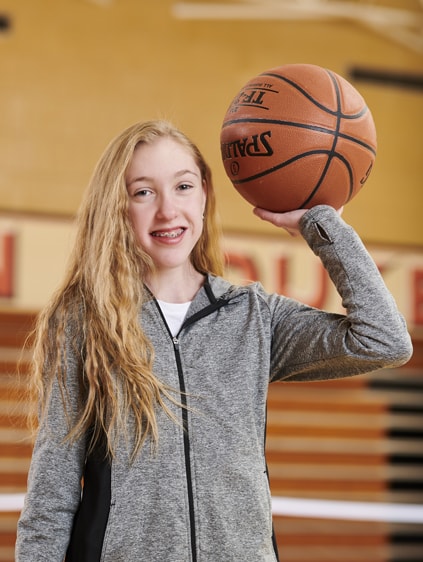State-of-the-Art Scoliosis Surgery Gives Youngster Freedom to Try Anything
February 24, 2019
 University Hospitals Rainbow Babies & Children'sExperts in Children's Health
University Hospitals Rainbow Babies & Children'sExperts in Children's Health


At just 12 years old, Noel Hughes is no stranger to the operating room. She was born with a condition called VATER syndrome, which involves a variety of birth defects that affect different parts of the body. Since birth, she’s had five major surgeries.
One of the conditions associated with VATER syndrome is scoliosis (a curvature of the spine). For most of her life, Noel visited Christina Hardesty, MD, a pediatric orthopedic surgeon at UH Rainbow Babies & Children’s Hospital, every six months for X-rays to see if her scoliosis was worsening.
About two years ago, the curves in Noel’s spine started becoming more severe. Dr. Hardesty wanted to give Noel more time to grow before performing surgery so she prescribed a custom-fit brace that Noel wore for 23 hours a day.
After several months, when the brace didn’t keep her condition from getting worse, Noel wore a cast for six months.
Finally, Dr. Hardesty determined that it was time for Noel to undergo spinal fusion surgery, in which she’d use rods and screws to fuse Noel’s vertebrae together to make her spine straight.
Incorporating 3-D Printed Technology in Scoliosis Surgery
Although Dr. Hardesty had performed the procedure countless times before, this was the first time she planned to use a brand-new approach.
“About a year prior, I became aware of Firefly® Technology and followed physicians in other states who were using it and having successful outcomes,” Dr. Hardesty says.
Firefly involves taking a CT scan of a patient’s spine, creating a 3-D printed replica and mapping out exactly where the screws should be placed.
“During a typical spine surgery, I can clearly see where I need to put the screws in the patient’s vertebrae,” Dr. Hardesty says. “But Noel’s vertebrae were so misshapen that I wouldn’t have been able to do this based on sight alone. Instead, I’d need to bring an X-ray machine into the operating room and use it over and over again while putting in each screw.”
This would take much longer than a typical spinal fusion surgery and expose Noel to a significant amount of radiation.
“Even then, the placement using X-rays may not have been 100 percent accurate,” Dr. Hardesty says.
With Firefly, however, the surgery is one to two hours faster than a typical spinal fusion, safer because it helps ensure the screws are placed in locations that won’t affect the spinal cord or nerves, and results in less time under anesthesia and decreased blood loss.
When Dr. Hardesty presented the idea of using Firefly to Noel’s family, they were all in. “I already had a lot of trust in Dr. Hardesty’s skill and judgment, and felt really good about using this approach because it could help make the surgery even safer and more precise,” says Noel’s mom, Connie.
On to New Activities
In December 2017, Dr. Hardesty performed Noel’s spinal fusion surgery using Firefly. Noel stayed in the hospital for four days and continued recovering at home.
The X-rays from before and after her surgery show a remarkable difference. Before, Noel’s spine had a distinct S-shape, which caused her to hunch over and tilt to one side. After the surgery, her spine was completely straight.
“With a straighter spine, Noel is two inches taller than before,” Connie says. “Her posture is beautiful – like a ballerina. She used to experience back pain, but that’s completely gone. She has much more confidence now, too.”
Noel’s surgery was the first time Dr. Hardesty used Firefly. In the year since her procedure, she’s used it 10 more times. “Firefly takes a risky surgery and makes it easier and safer to complete,” Dr. Hardesty says.
Just a few months after the surgery, Dr. Hardesty cleared Noel to participate in any activities she wishes, which include horseback riding and softball. “Noel’s a dynamo,” Connie says. “Thanks to the successful surgery, she can run and play just like other kids her age.”
Related Links
For more information on Firefly Technology, call 216-844-8350.


